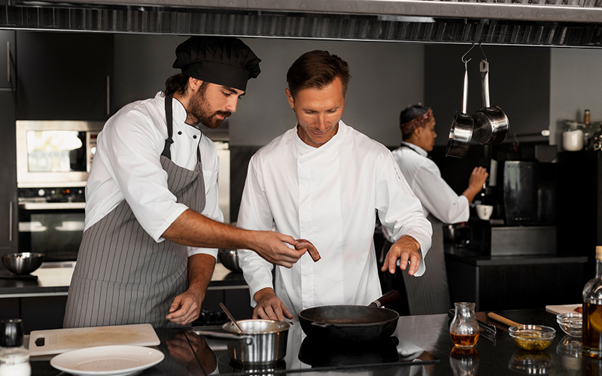Food as Theatre: How Live Stations Double as Entertainment
 Posted On
Posted On
A meal can fill stomachs, but a performance can fill the room with energy. Live stations bring both together, blending food and fun in one engaging package. Watching chefs cook in real time transforms dining into a show, keeping guests entertained while they wait for their plate. This approach turns a catering company in Singapore from a background function into part of the main event.
Why Guests Enjoy the Show
People are naturally curious about how food is made. Seeing ingredients chopped, grilled, or tossed in front of them makes the process more exciting. Live station catering adds anticipation as guests watch their meals take shape. It gives them the chance to ask questions, customise toppings, and enjoy a dish crafted just for them. Unlike pre-prepared buffets, the action adds life to the event and keeps conversations flowing.
The appeal is not only in freshness but also in engagement. Guests feel involved in the meal when they can interact with the chef or influence how their food is served. This sense of participation makes dining less routine and more of an experience to share and remember.
The Role of the Chef as Performer
At a live station, chefs take centre stage. Chefs at live stations balance preparing dishes with engaging guests through their cooking and interaction, giving equal importance to cooking with skill and engaging with guests through interaction. Flipping prata, searing meat with a quick flame, or rolling sushi in front of an eager crowd adds drama to the meal. A catering company in Singapore offering these setups knows the importance of having chefs who can cook well and connect with an audience at the same time. This interaction makes the food memorable because it is part of a shared experience.
The chef’s ability to multitask (cooking, presenting, and conversing) creates a performance that blends hospitality with skill. When chefs explain ingredients or share short anecdotes, it adds depth to the moment and builds a stronger connection between guest and host.
Different Types of Live Stations
There are many ways to bring entertainment to the table. Popular options include carving stations, noodle bars, or dessert counters where waffles and crepes are made fresh. Each type suits a different crowd and event style. For casual gatherings, skewers or tacos bring quick fun. For weddings, pasta tossed on the spot or intricate dessert plating raises the atmosphere. Live station catering is flexible, giving hosts options that fit the mood and budget.
Some events even experiment with themed stations, where décor and music match the food being prepared. A ramen station with Japanese touches or a satay grill with outdoor elements extends the entertainment beyond food and ties it to the overall theme of the event.
Practical Advantages for Events
While live stations add entertainment, they also offer practical benefits. Food is served in smaller portions, which helps control waste and gives guests more variety. Service flows smoothly since guests approach the station in smaller groups, avoiding long buffet queues. A catering company in Singapore can advise on the number of stations needed based on guest count and venue space. This balance keeps things lively without slowing down the programme.
Live stations also provide flexibility in pacing. They allow organisers to stagger dishes across the programme, keeping guests satisfied throughout the event rather than overwhelming them with food at once. This balance of entertainment and practicality ensures the menu complements the schedule rather than disrupts it.
Creating Atmosphere Beyond the Plate
The sights, sounds, and smells of live cooking bring a sensory layer to events. The sizzle of a grill, the aroma of spices, and the visual of chefs at work make the dining area more dynamic. Guests often gather around these stations, turning them into natural social hubs. This atmosphere encourages interaction not just with food but also among attendees, making the event feel more connected and vibrant.
Lighting, layout, and even the arrangement of stations all influence how people move and interact. Well-placed stations reduce crowding and invite guests to circulate, ensuring the experience feels lively and enjoyable.
Catering as Part of the Entertainment
Events often plan for music, speeches, or games, but food can play a role in entertainment too. With live stations, guests get both a meal and a show. This dual role makes the catering service a talking point even after the event ends. Instead of food being an unnoticed backdrop, it becomes part of the highlight reel. Live station catering bridges the gap between dining and entertainment, giving guests more reasons to enjoy themselves.
The entertainment value also adds to the event’s memorability. Guests leave with stories about the food they saw being prepared, whether it was a flaming grill or a dessert decorated in front of their eyes. These stories linger long after the plates are cleared.
Bringing It All Together
Live stations show that catering brings together cooking skill and guest interaction, with chefs using both to shape the overall mood of the event. They combine flavour, interaction, and atmosphere in ways that static buffets cannot. By working with a skilled catering company in Singapore, hosts can introduce live station catering that entertains as much as it feeds. The result is an event where food is not only eaten but also enjoyed as part of the show. Contact Elsie’s Kitchen to bring the energy of live station catering into your next event.

